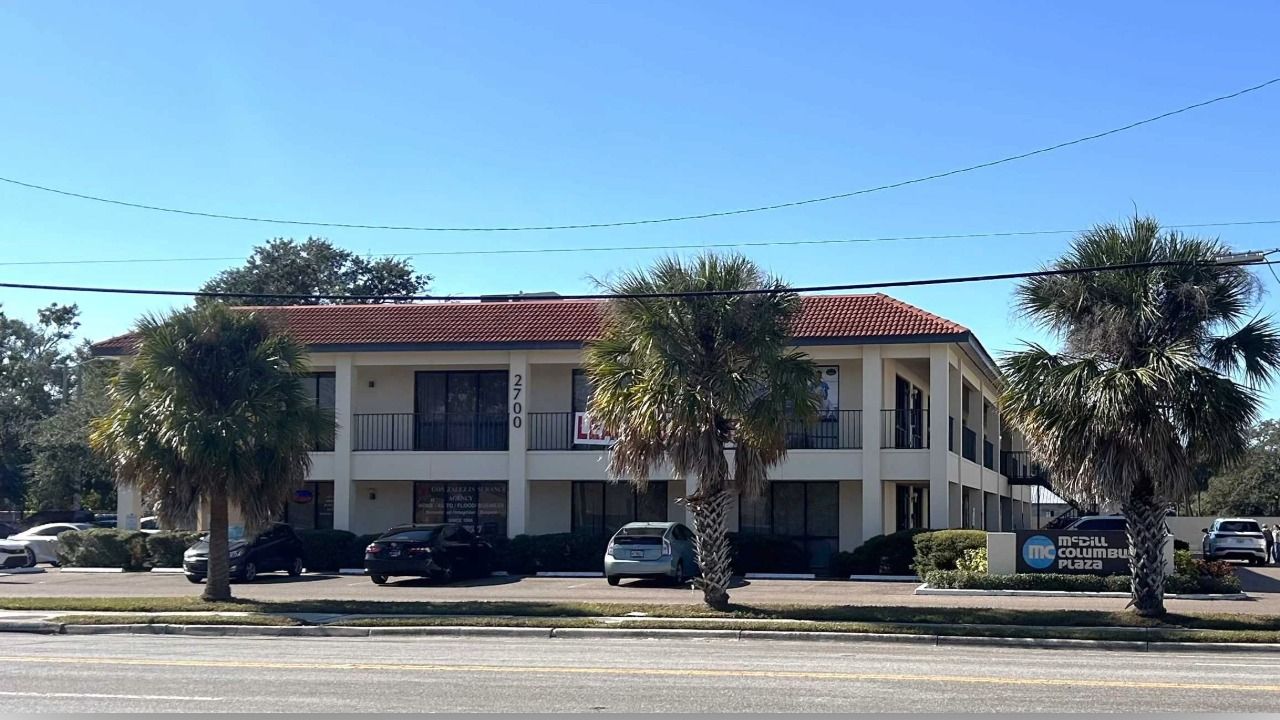To motorists driving east on Interstate 4, from Tampa to Orlando, the looming white structure to the right of the road, somewhere in Lakeland, is an object of both admiration and anonymity. Many a motorist has doubtlessly wondered about this behemoth, yet majestic, building. It resembles a white Pegasus, its louvered arms like the mythical creature’s wings flapping and stretching skyward, preparing to fly.
“It is a work of art,” says Randy Avent, founding president of the university that calls this building home.
Since its 2012 founding, Florida Polytechnic University—an upstart school focused on science, technology, engineering and math education in Lakeland—has strengthened into an academic and economic boon for the area. A recent report found that the school generates $289 million in annual economic impact.
Even Avent was somewhat surprised by that number.
“To be honest, I didn’t know it was going to be nearly that high,” he says.
Florida Polytechnic is all about STEM. The university was created in response to anticipation of the skyrocketing demand for STEM professionals. The school trains students for what Avent calls “high-demand, low-supply jobs.” It’s basic economics: There is a high demand for STEM professionals who can fill these jobs, but a low supply of such professionals
“Eighty thousand STEM jobs go unfilled each month in the state of Florida,” says Avent, citing a Project Sunrise report from the Florida Council of 100. “Because they’re in high demand, and there’s a low supply of graduates, that of course drives up the earnings. Our graduates are seeing much-higher starting salaries than most other graduates, and when you multiply that over the course of a 30- to 40-year career, the net present value of their earnings really adds up to a lot of money.”
So much money, in fact, that, according to the report, the jobs most highly associated with the Florida Poly fields of study paid an average of $82,524 on a statewide basis, compared to the average Florida annual income of $46,155 in 2018.
Besides STEM, Florida Poly’s other economic engine is research. The school differentiates itself from peer institutions through applied research, which seeks to solve previously unsolved problems, Avent says. Once these problems are solved, companies and whole industries congregate around the universities that solve them, seeking to sell the products and services that these solutions have become. Even government gets in on it, with Florida’s Turnpike Enterprise having built an advanced test facility next to the university. The school broke ground on its Applied Research Center last September to further its mission of applied research.
Consider Florida Polytechnic in the proper contexts. The university is thriving in an oversaturated market for higher education, in the state with (on average) the second-lowest cost of public university education, according to Avent. With comparable admissions standards, the university surely is taking business away from older, prestigious institutions like the University of Florida, Florida State University and the University of South Florida. In total, the State University System of Florida has 12 public universities.
In an increasingly less traditional higher education environment, Florida Poly is innovating not only through its academic offerings but also through its student life.
“These are students who aren’t looking for the comprehensive, large university,” Avent says. “[These] students aren’t interested in going to football games on the weekend; they’re not interested in joining fraternities and sororities. These are those students [whose] idea of a good time is a hackathon. And they [didn’t] have that small, high-touch model, intimate engineering college in the state of Florida until Florida Poly was created.”
It was created as a small school, and unlike most other schools in the state (except for New College of Florida), it still is. Its size allows for what Avent calls a high-touch teaching model with project-based learning. Perhaps such an intimate learning environment eases the rigor of the school’s STEM coursework. In the short time since it was founded, students have developed a strong work culture and pro-intellectual fervor. One student, for example, designed and built a pingpong machine. Avent says he used a three-dimensional printer to create all of the parts, assembled the machine, then built a circuit to drive the machine and a code to drive the circuit.
Such technical ingenuity perfectly exemplifies the STEM-driven economic gains that characterize the university’s economic impact. Some of economist Rick Harper’s key findings from the report include:
• The current annual impact of the university to the Florida economy is calculated to be
more than $161 million in gross domestic product at the local and state level.
• Of this annual economic impact, more than $72 million per year of this GDP impact
occurs in Polk County alone, assuming that about 10 percent of Florida Poly graduates go
on to live and work in Polk.
• About 61 percent of the economic impact of the university, as measured by the
increment to state and local GDP, is driven by the skills, credentials and increased
earning capacity of the graduating students.
• The average annual differential between the earnings of a Florida Poly graduate and a worker in Florida with only a high school degree, at $45,913 per year (when measured at median earnings per year by occupation across occupations typically requiring a degree credential in a Florida Poly concentration, versus typically requiring a high school diploma), is the highest of any university in the state system.
Central Florida is taking notice of these impacts.
“The return on investment for those dedicated to the university’s growth and success, as well as what is projected for graduates, once again confirms the tremendous value that Florida Polytechnic University provides for Lakeland, Polk County and our region,” says Cory Skeates, president and CEO of the Lakeland Chamber of Commerce. “The highly skilled students the university is educating, and its continued investment in research and technology, will allow for a further diversification of our local economy and the creation of the high-wage jobs we all desire.”
Harper envisions even more growth for the university corresponding with unrelenting growth in STEM fields.
“The trend is more and more in this exact direction, because the pace of technology growth is actually accelerating,” he says. “If you just think of the innovations that we’ve seen over the last 10 years, and over the last 30 years, and over the last 50 years, the pace of change is accelerating. That’s due to computing power getting cheaper and cheaper, whereas fringe benefits that you pay to labor [are] getting more and more expensive.”
As companies use technology that lowers cost production, they will hire professionals Harper calls “masters of the new technologies” who can deploy these technologies for their employers’ benefit. Harper expects that wages for STEM professionals will continue to grow as more low- (and even other high-) skilled jobs are imperiled by the trend of automation that hasn’t yet touched STEM.
All signs indicate that won’t happen anytime soon. Now, and in the foreseeable future, motorists coasting along I-4 will know to whom the striking white building on the side of the road belongs. In a fitting feat of engineering, the building’s 94 louvered arms rise and fall over the course of the day in sync with the sun, setting its second-floor atrium aglow. In a time-lapse video, the university’s flagship, Pegasus-like building would—much like the school itself—appear about to take flight. ♦













